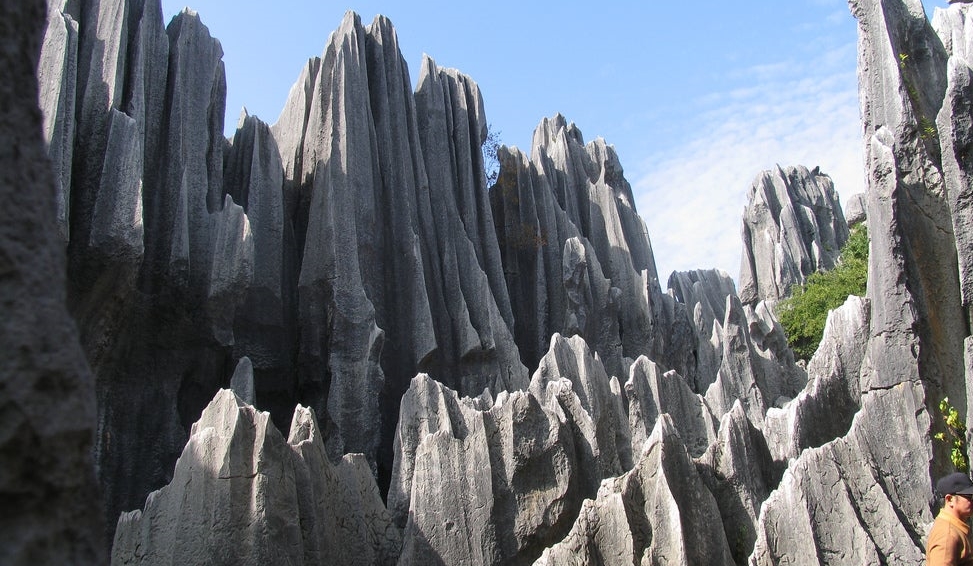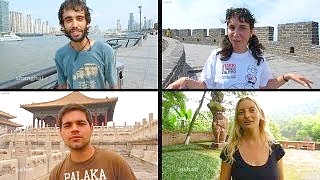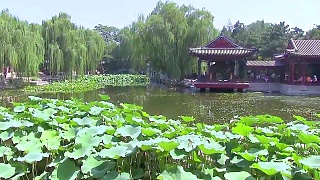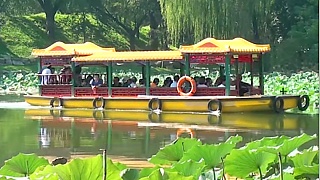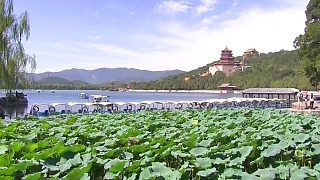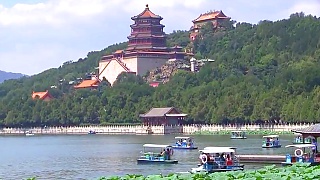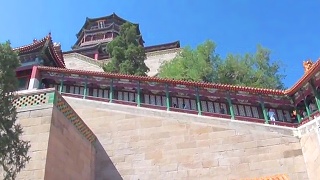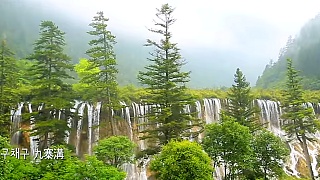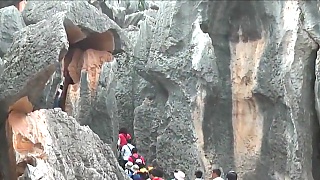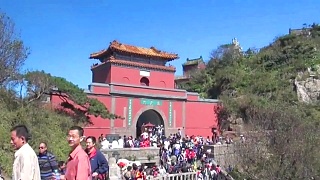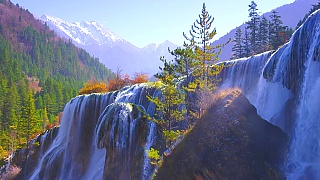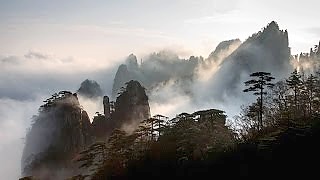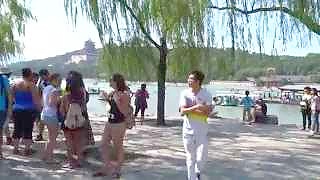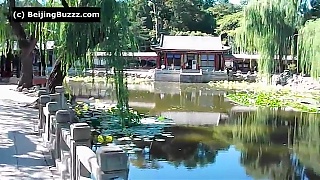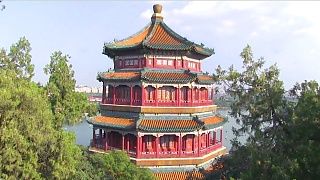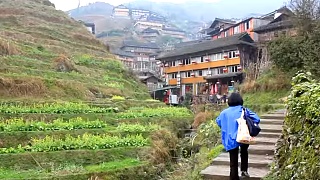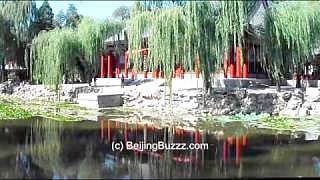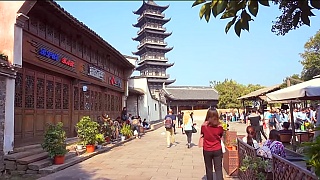With Beijing Old Liu ...
[640],shadow=true,start=,stop=Visitor guide to the Summer Palace in BeiJing
Overview
The Summer Palace, located in the Haidian District of BeiJing, is a vast ensemble of lakes, gardens, and palaces. It served as a summer retreat for the Qing Dynasty emperors. Renowned for its beautiful landscape and rich cultural heritage, it is a UNESCO World Heritage Site and one of BeiJing's top tourist attractions.
Getting There
Location: The Summer Palace is located in the northwest of BeiJing, about 15 kilometers from the city center.
By Canal Boat: For a unique and scenic route, take a canal boat from the Purple Bamboo Park (ZiZhuYuan) or Beijing Zoo wharfs. The boat ride takes about an hour and provides a relaxing way to reach the Summer Palace, offering views of the city's waterways.
By Subway: Take Subway Line 4 and get off at Beigongmen Station (Exit D), which is close to the North Palace Gate.
By Bus: Several bus routes, including 303, 330, 331, 332, 346, 394, 563, 584, 601, and 608, stop near the Summer Palace.
By Taxi: A taxi ride from central BeiJing takes about 30 minutes, depending on traffic.
Entrance and Tickets
- Main Gates: The three main entrances are the East Palace Gate, the North Palace Gate, and the New Palace Gate (South Gate).
- Entrance Fee: The entrance fee varies by season. Generally, it ranges from 30 to 60 RMB. Combined tickets, including entry to special sites like the Tower of Buddhist Incense and Suzhou Street, are also available.
- Opening Hours: The Summer Palace is open daily from 6:30 AM to 6:00 PM (April to October) and 7:00 AM to 5:00 PM (November to March).
Main Attractions
Kunming Lake
Kunming Lake covers approximately three-quarters of the Summer Palace area. Visitors can take a boat ride to enjoy the scenic beauty and visit the South Lake Island.
Longevity Hill
Rising behind Kunming Lake, Longevity Hill is dotted with splendid halls, pavilions, and temples. Key sites include the Tower of Buddhist Incense, the Sea of Wisdom Temple, and the Hall of Dispelling Clouds.
Seventeen-Arch Bridge
This iconic bridge connects the eastern shore of Kunming Lake to Nanhu Island. It is known for its unique design and the 544 stone lions carved on its railings.
Long Corridor
The Long Corridor is a covered walkway that stretches for 728 meters along the northern shore of Kunming Lake. It is adorned with thousands of beautiful paintings depicting Chinese legends and landscapes.
Marble Boat
The Marble Boat, also known as the Boat of Purity and Ease, is a lakeside pavilion made of marble. It symbolizes stability and is a unique and photogenic structure.
Suzhou Street
Suzhou Street is a charming area with shops and buildings designed to mimic the style of the famous water town of Suzhou. It offers a glimpse into traditional Chinese commerce and architecture.
Activities and Experiences
- Boat Rides: Rent a paddle boat or take a dragon boat cruise on Kunming Lake for a relaxing and scenic experience.
- Photography: The Summer Palace offers countless picturesque spots, especially at dawn and dusk when the light is soft and golden.
- Walking and Hiking: Explore the numerous trails and paths around Longevity Hill and the lakeshore for a leisurely or invigorating hike.
- Picnicking: Enjoy a picnic in one of the many tranquil garden areas, surrounded by beautiful landscapes and historical architecture.
Dining and Refreshments
- Palace Restaurants: There are several restaurants within the Summer Palace grounds offering traditional Chinese cuisine and snacks.
- Tea Houses: Enjoy a traditional tea experience at one of the tea houses overlooking Kunming Lake.
- Outside Dining: Numerous restaurants and cafes are located near the main entrances, offering a variety of dining options.
Shopping
- Souvenir Shops: Various shops within the Summer Palace sell traditional Chinese arts and crafts, souvenirs, and books.
- Market Streets: Nearby shopping streets outside the palace offer local snacks, handicrafts, and other unique items.
Tips for Visitors
- Best Time to Visit: The best times to visit the Summer Palace are spring (April to June) and autumn (September to November) when the weather is mild and the scenery is at its most beautiful.
- Clothing: Wear comfortable walking shoes and dress in layers to accommodate changing temperatures. An umbrella or raincoat is useful during the rainy season.
- Plan Your Visit: The Summer Palace is vast, so plan your visit to focus on the main attractions you want to see. A map of the palace grounds can be very helpful.
- Stay Hydrated: Bring water, especially during the hot summer months, as the extensive grounds require a lot of walking.
- Respect Local Customs: Be respectful of cultural and historical sites. Avoid touching artifacts and follow posted signs and instructions.
Conclusion
The Summer Palace in BeiJing is a stunning testament to Chinese landscape gardening and imperial architecture. With its combination of natural beauty, historical significance, and cultural richness, it offers an unforgettable experience for every visitor. Plan your trip carefully to make the most of your visit and immerse yourself in the splendor of this magnificent heritage site.
Beijing, the capital city of China, is a vibrant metropolis steeped in history, culture, and modernity. Here's a brief overview of what you can expect as a tourist in Beijing:
Historical Landmarks:
The Great Wall of China: One of the most iconic structures in the world, the Great Wall is easily accessible from Beijing. Mutianyu and Badaling sections are popular among tourists.
Forbidden City (Palace Museum): A UNESCO World Heritage Site, this vast imperial palace complex was home to Chinese emperors for over 500 years. It houses numerous halls, courtyards, and historical artifacts.
Temple of Heaven: A masterpiece of Chinese architecture, this ancient temple complex served as a place of worship for emperors to pray for good harvests.
Summer Palace: A stunning ensemble of lakes, gardens, and palaces, the Summer Palace served as a retreat for emperors during the Qing dynasty.
Tiananmen Square: One of the largest city squares in the world, Tiananmen Square is flanked by important landmarks such as the Monument to the People's Heroes, the Great Hall of the People, and the Mausoleum of Mao Zedong.
Cultural Sites:
Beijing Hutongs: Explore the narrow alleyways and traditional courtyard residences of Beijing's historic neighborhoods. You can take a rickshaw tour or simply wander around on foot.
Beijing Opera: Experience traditional Chinese opera performances at venues like the Liyuan Theater or the Chang'an Grand Theatre.
798 Art District: A hub of contemporary art and culture, this former industrial area is now home to numerous galleries, studios, and cafes.
Modern Attractions:
Olympic Park: Visit iconic structures such as the Bird's Nest (National Stadium) and the Water Cube (National Aquatics Center) from the 2008 Beijing Olympics.
CBD (Central Business District): Marvel at the futuristic skyline of Beijing's modern business district, which includes landmarks like the CCTV Headquarters and the China World Trade Center Tower III.
Culinary Delights:
Peking Duck: Indulge in Beijing's most famous dish, crispy roast duck served with pancakes, scallions, and hoisin sauce.
Street Food: Explore the city's vibrant street food scene and sample local delicacies like jianbing (savory crepes), lamb skewers, and dumplings.
Practical Tips:
Transportation: Beijing has an extensive public transportation system, including the subway, buses, and taxis. However, traffic can be heavy, so plan your travels accordingly.
Language: While English is not widely spoken, especially outside tourist areas, many signs and transportation announcements are in English. It's helpful to carry a translation app or a phrasebook.
Weather: Beijing experiences four distinct seasons, with hot summers and cold winters. The best times to visit are spring (April to June) and autumn (September to October) when the weather is mild and comfortable.
Etiquette: Respect local customs and traditions, such as removing your shoes before entering someone's home and using both hands to pass or receive items.
Beijing offers a rich tapestry of experiences for tourists, blending ancient heritage with modern innovations. Whether you're fascinated by history, culture, or culinary delights, there's something for everyone in this dynamic city.
 The awesomely beautiful Summer Palace in BeiJing
The awesomely beautiful Summer Palace in BeiJing

